Abstract
1. The release of neurohypophysial hormones in response to carotid occlusion and haemorrhage has been studied in anaesthetized cats. Samples of jugular venous blood were extracted with alcohol and the extracts assayed for antidiuretic and milk-ejecting activity.
2. The release of vasopressin in response to bilateral occlusion of the common carotid arteries has been confirmed in the cat; this effect was abolished when the sinus nerves were divided.
3. Using a new sensitive preparation for the assay of milk-ejecting activity in blood extracts, it has been shown that no oxytocin accompanies the release of vasopressin during carotid occlusion.
4. The independent release of vasopressin without oxytocin during haemorrhage has also been confirmed, and the role of the sinus nerves and vagi in this response investigated. Bilateral division of either nerve reduced the response, but the vagus appeared to be of greater importance than the sinus nerve.
5. A reflex arc for the selective release of vasopressin has been proposed, of which the fibres of the sinus nerves and vagi form the afferent component and the neurones of the supraoptic nucleus the efferent component.
Full text
PDF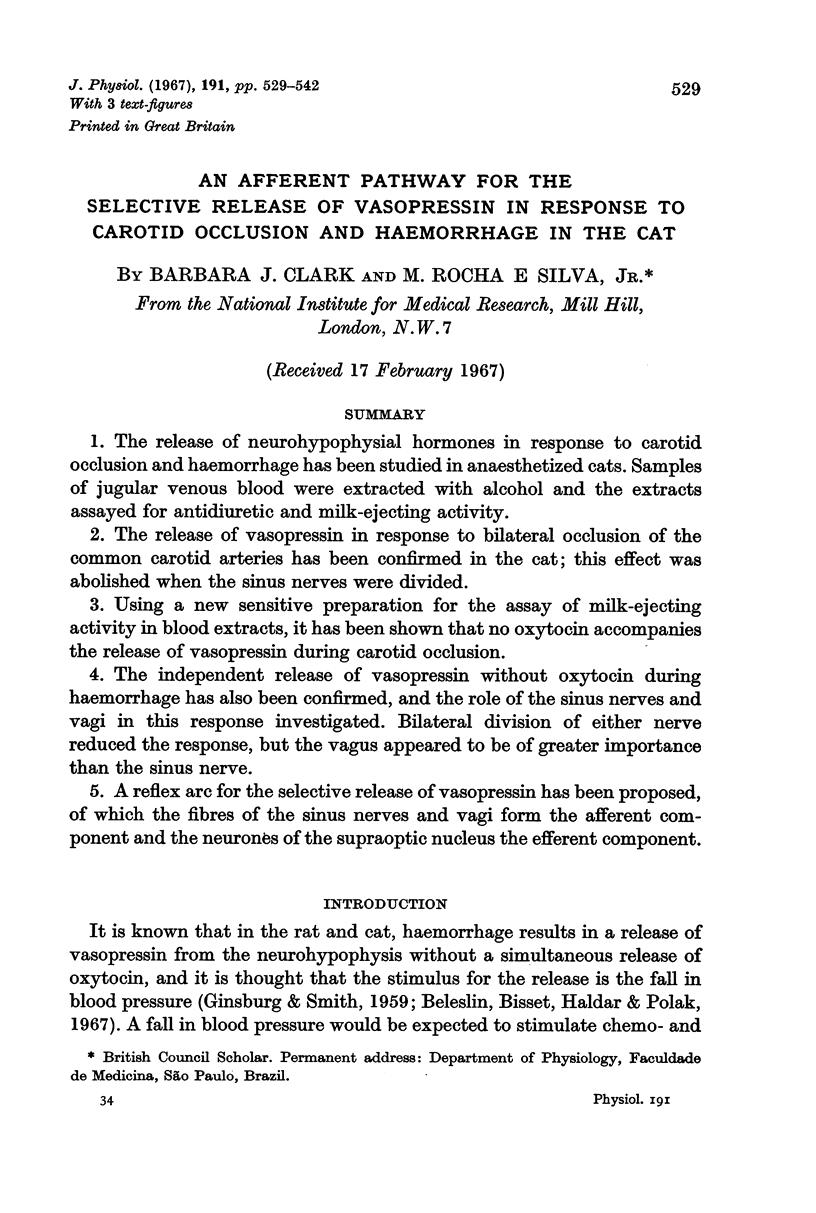
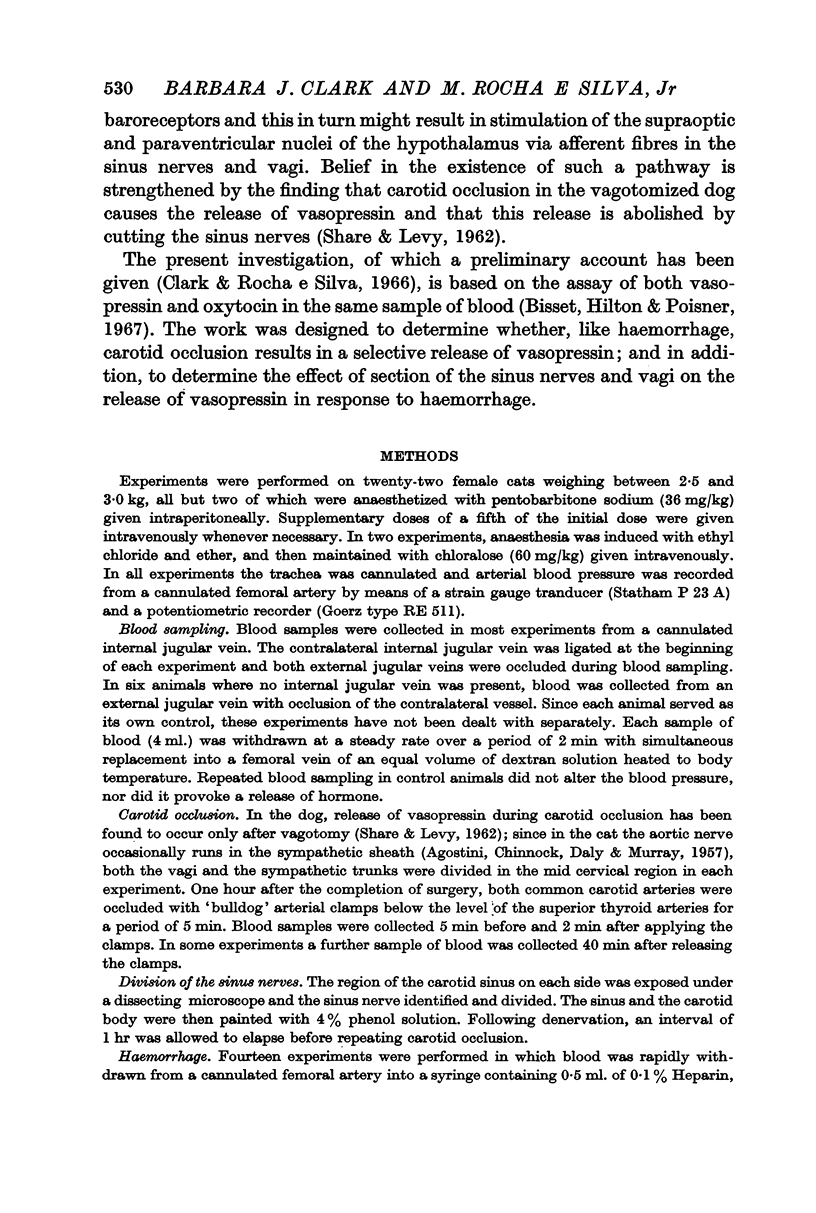
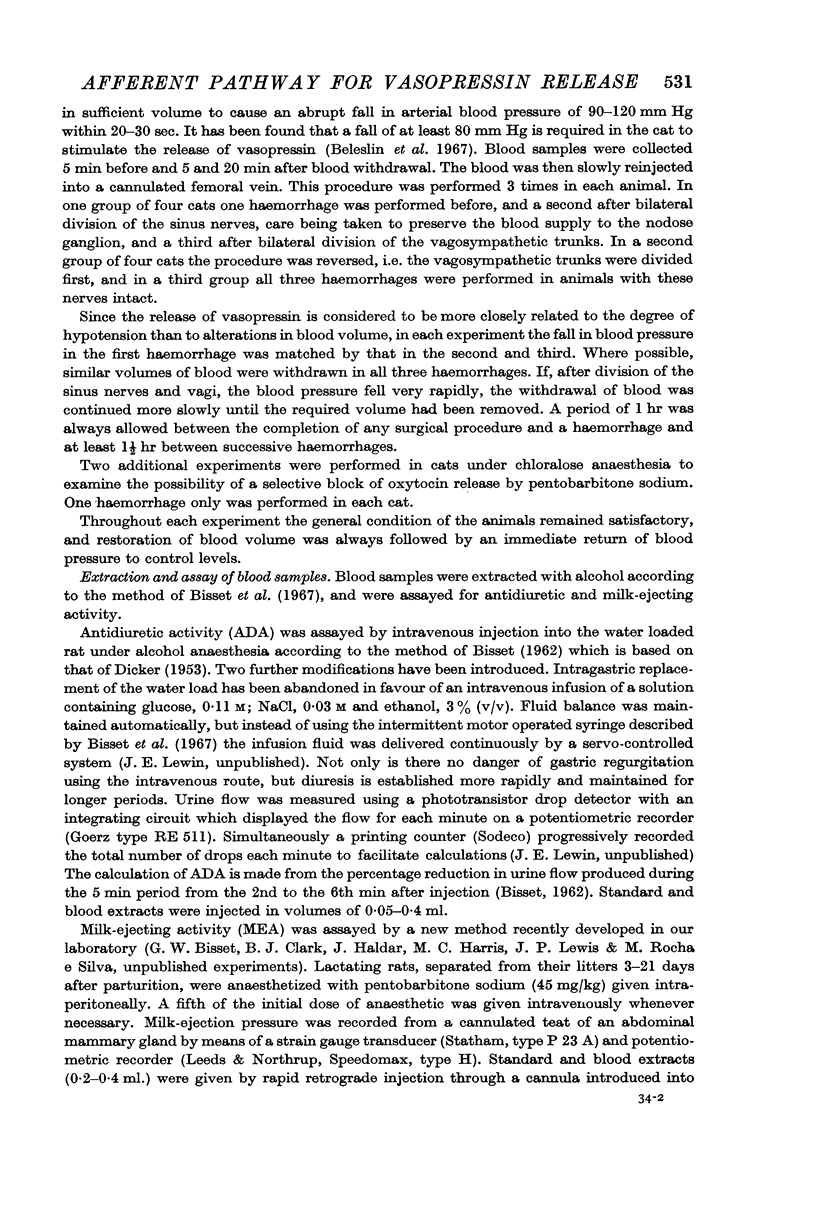
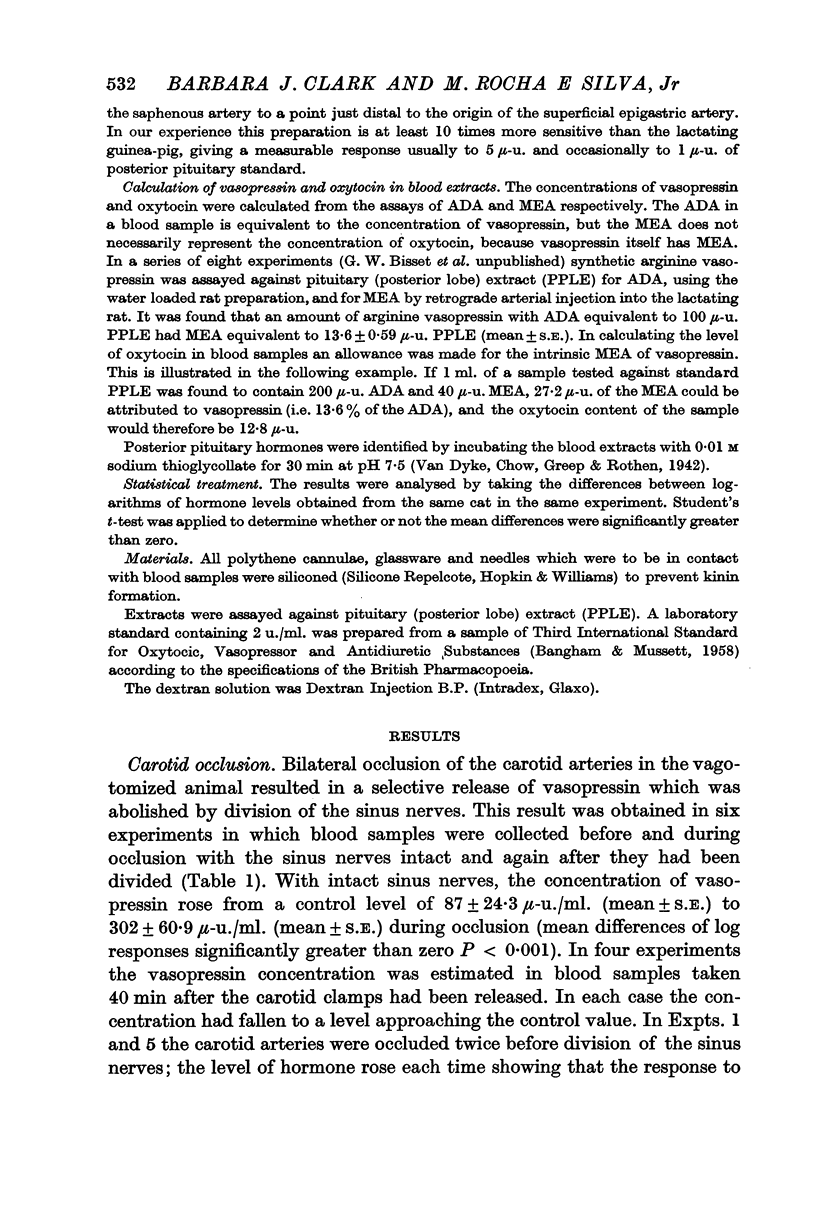

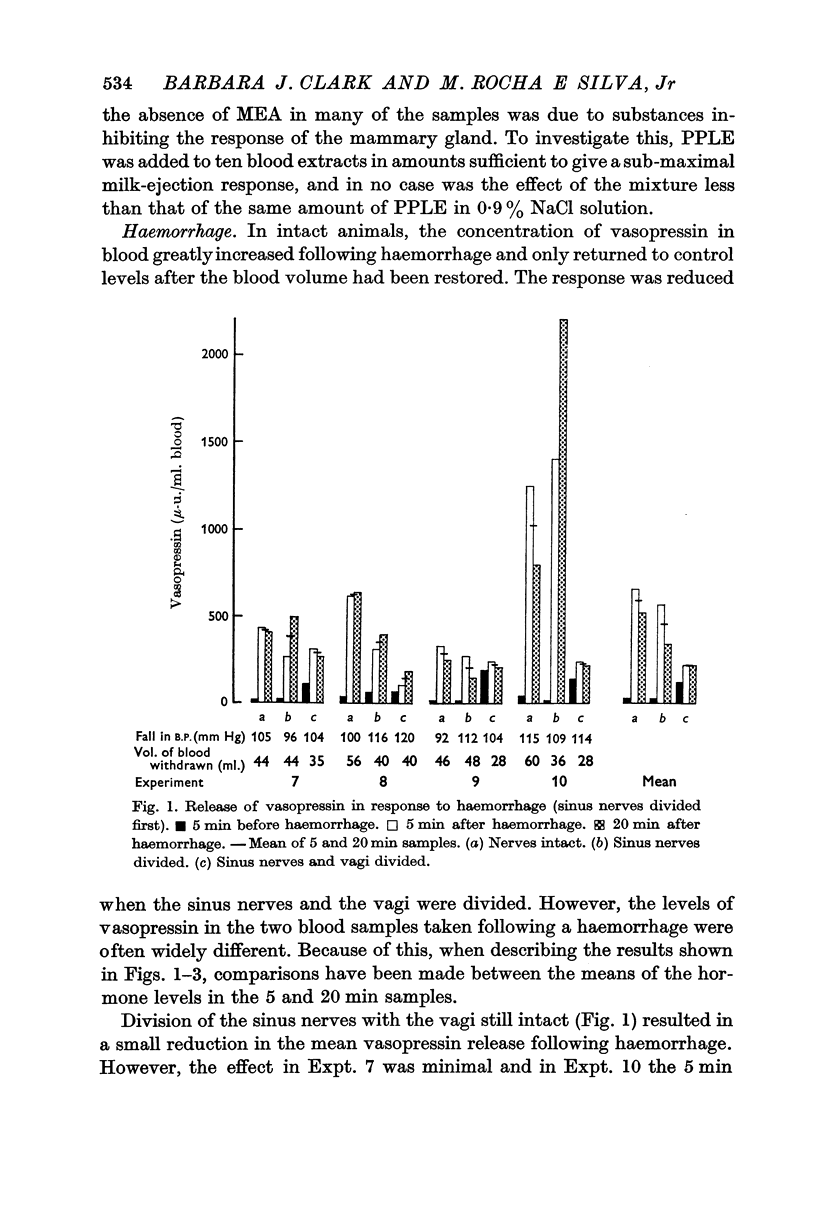

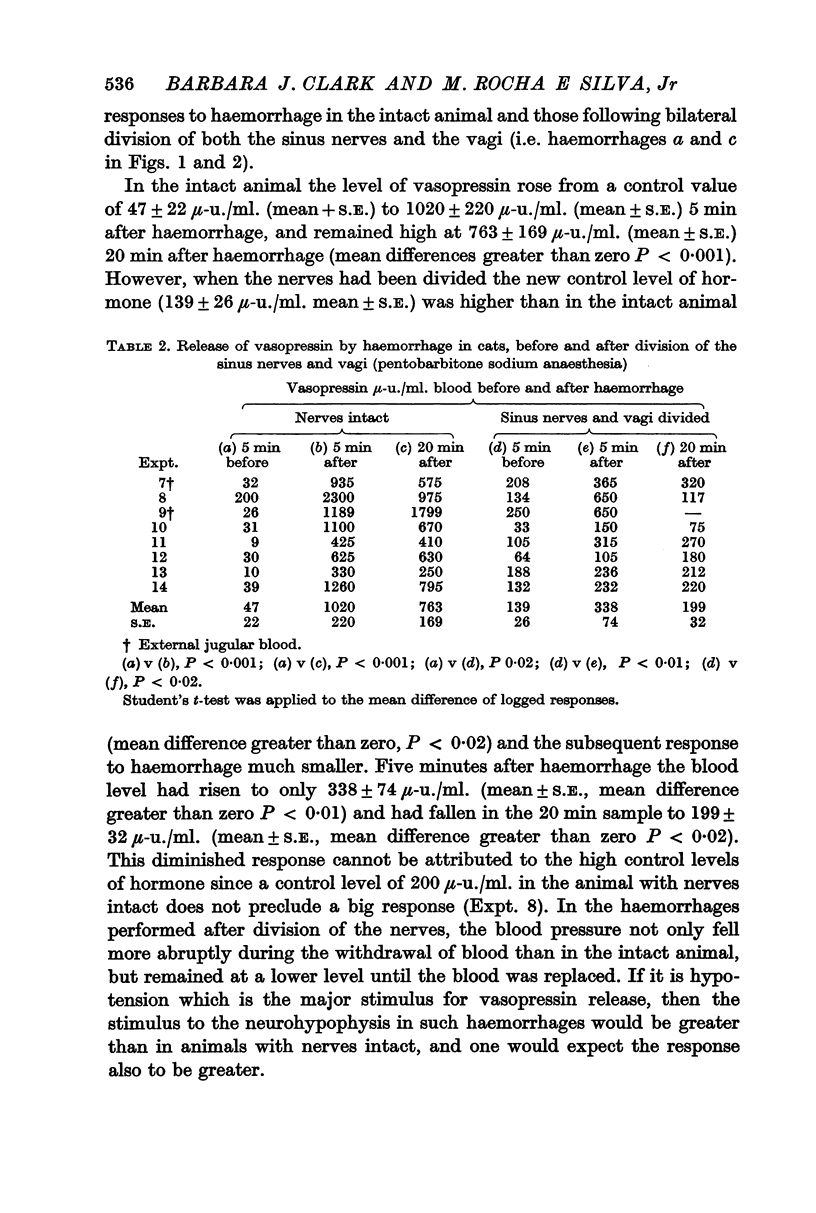
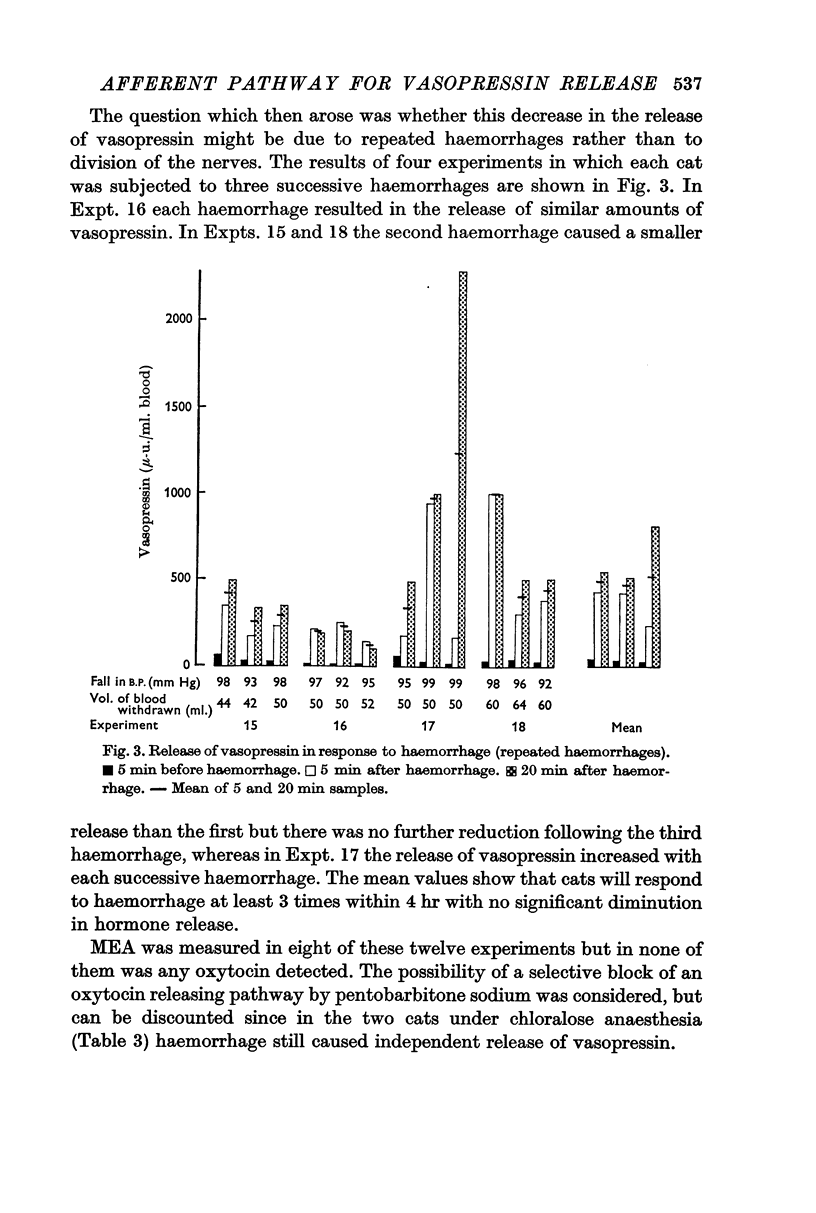

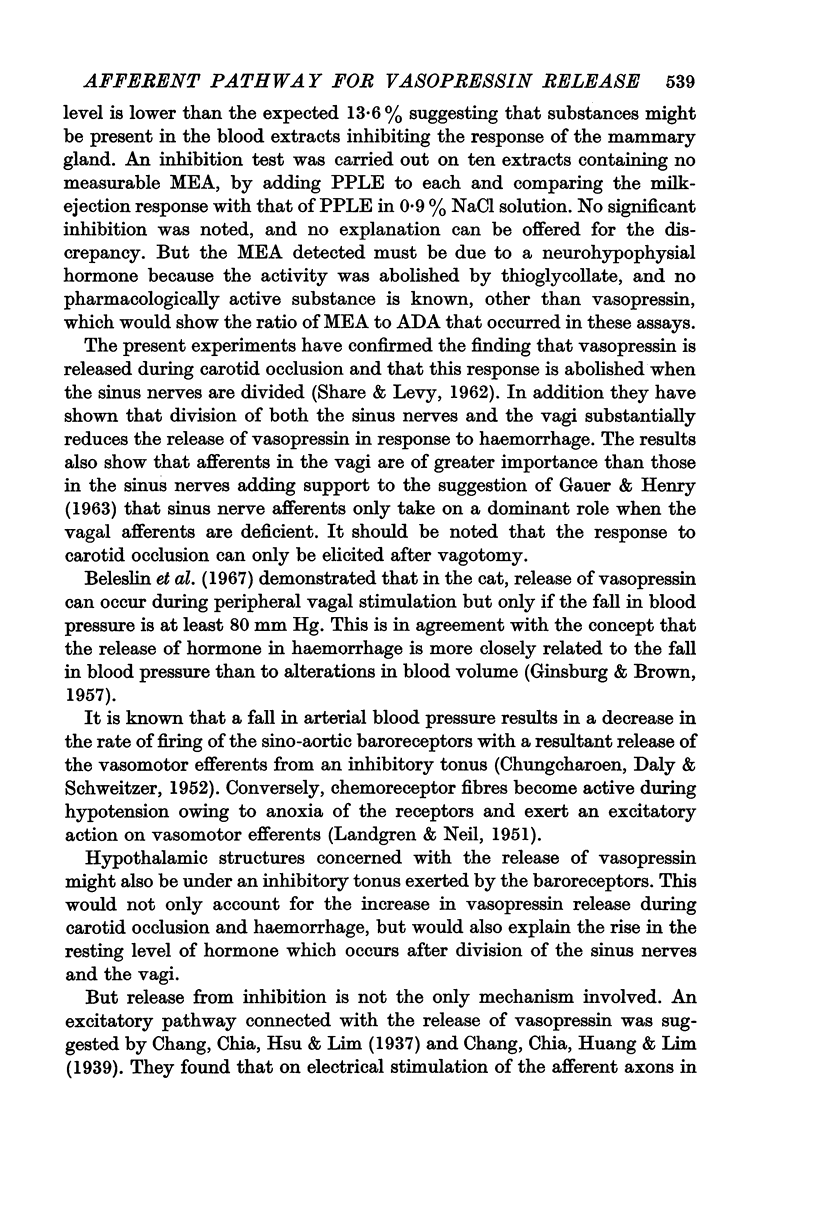
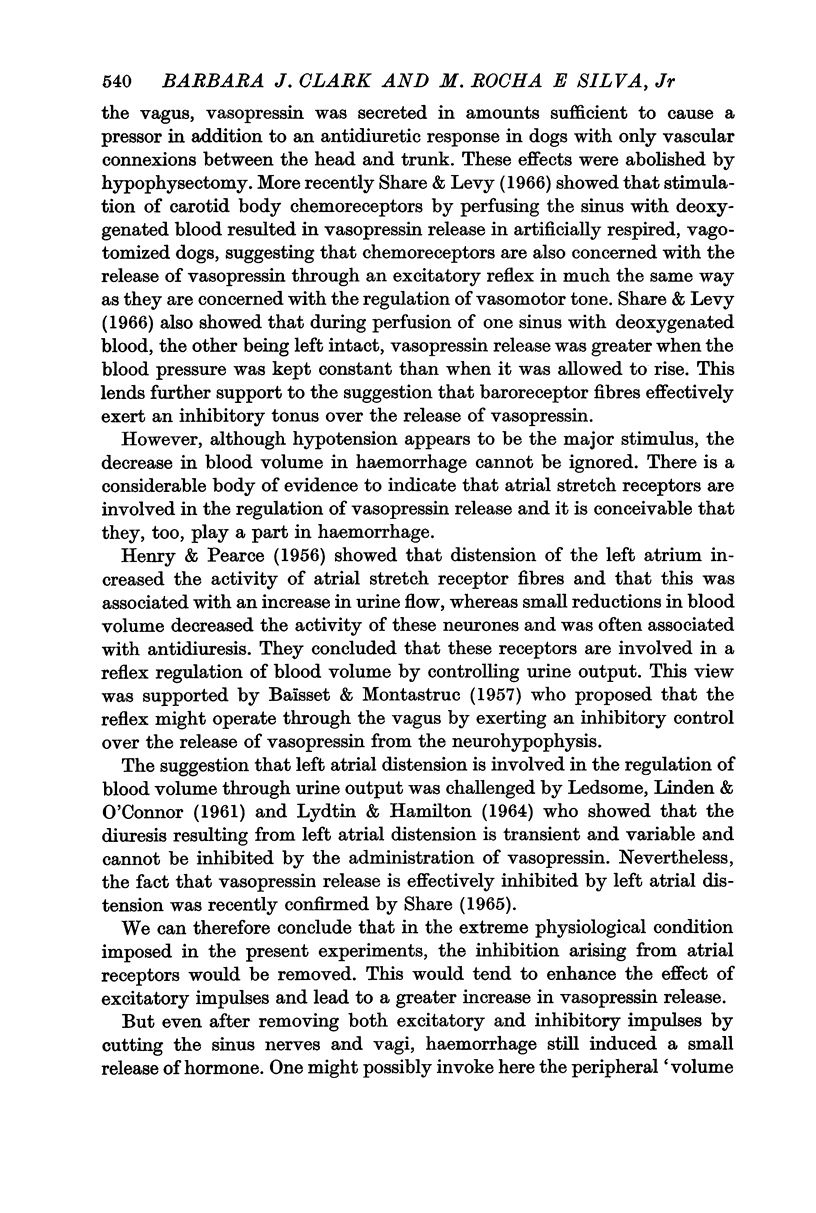
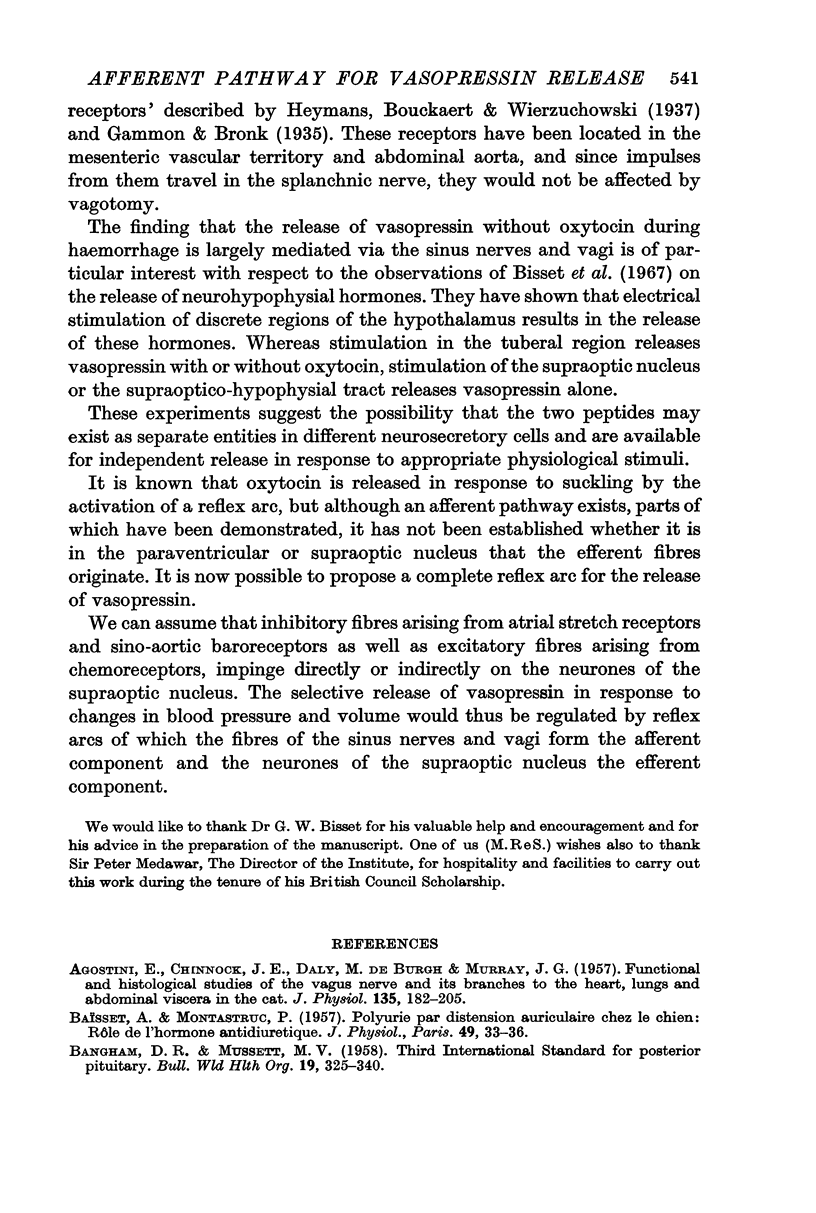
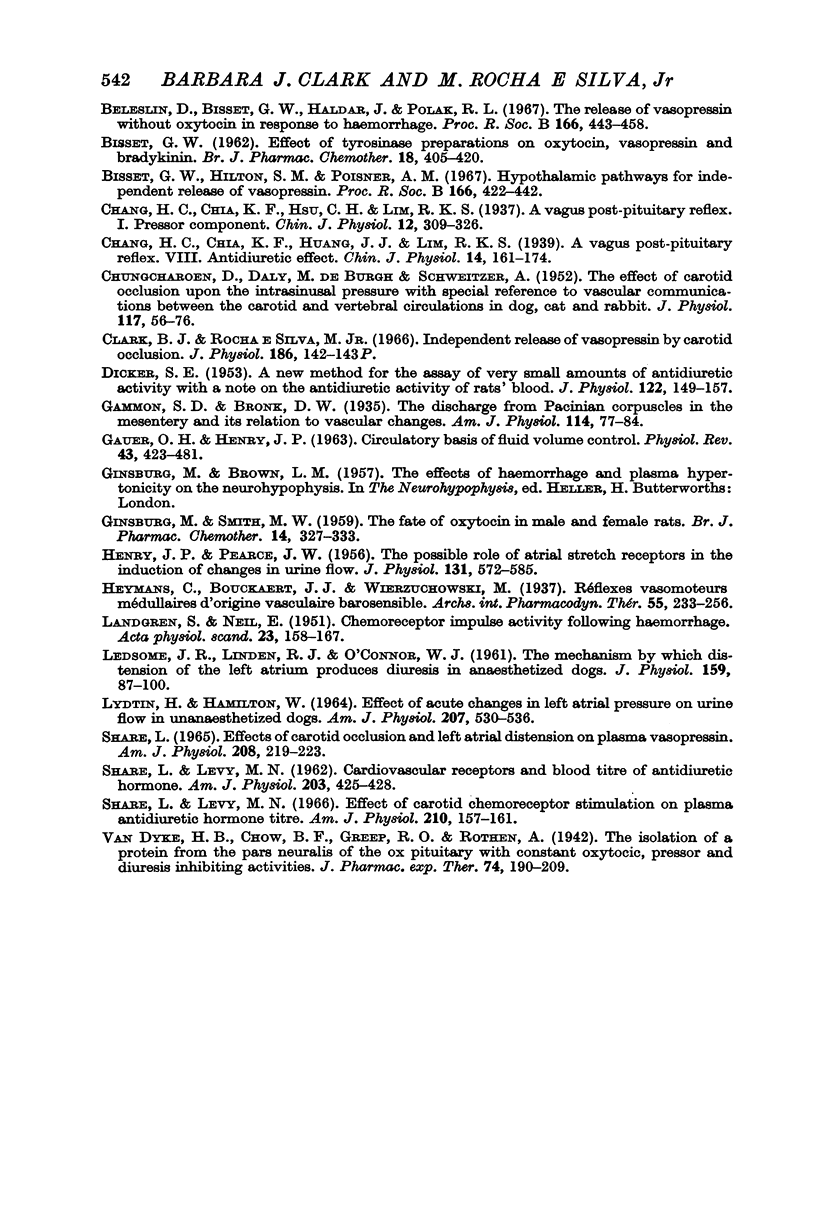
Selected References
These references are in PubMed. This may not be the complete list of references from this article.
- AGOSTONI E., CHINNOCK J. E., DE DALY M. B., MURRAY J. G. Functional and histological studies of the vagus nerve and its branches to the heart, lungs and abdominal viscera in the cat. J Physiol. 1957 Jan 23;135(1):182–205. doi: 10.1113/jphysiol.1957.sp005703. [DOI] [PMC free article] [PubMed] [Google Scholar]
- BAISSET A., MONTASTRUC P. Polyurie par distension auriculaire chez le chien; rôle de l'hormone antidiurétique. J Physiol (Paris) 1957 Jan-Mar;49(1):33–36. [PubMed] [Google Scholar]
- BISSET G. W. Effect of tyrosinase preparations on oxytocin, vasopressin and bradykinin. Br J Pharmacol Chemother. 1962 Apr;18:405–420. doi: 10.1111/j.1476-5381.1962.tb01420.x. [DOI] [PMC free article] [PubMed] [Google Scholar]
- CHUNGCHAROEN D., De BURGH DALY M., NEIL E., SCHWEITZER A. The effect of carotid occlusion upon the intrasinusal pressure with special reference to vascular communications between the carotid and vertebral circulations in the dog, cat and rabbit. J Physiol. 1952 May;117(1):56–76. [PMC free article] [PubMed] [Google Scholar]
- GAUER O. H., HENRY J. P. Circulatory basis of fluid volume control. Physiol Rev. 1963 Jul;43:423–481. doi: 10.1152/physrev.1963.43.3.423. [DOI] [PubMed] [Google Scholar]
- GINSBURG M., SMITH M. W. The fate of oxytocin in male and female rats. Br J Pharmacol Chemother. 1959 Sep;14:327–333. doi: 10.1111/j.1476-5381.1959.tb00252.x. [DOI] [PMC free article] [PubMed] [Google Scholar]
- HENRY J. P., PEARCE J. W. The possible role of cardiac atrial stretch receptors in the induction of changes in urine flow. J Physiol. 1956 Mar 28;131(3):572–585. doi: 10.1113/jphysiol.1956.sp005483. [DOI] [PMC free article] [PubMed] [Google Scholar]
- LANDGREN S., NEIL E. Chemoreceptor impulse activity following haemorrhage. Acta Physiol Scand. 1951 Aug 25;23(2-3):158–167. doi: 10.1111/j.1748-1716.1951.tb00805.x. [DOI] [PubMed] [Google Scholar]
- LEDSOME J. R., LINDEN R. J., O'CONNOR W. J. The mechanisms by which distension of the left atrium produces diuresis in anaesthetized dogs. J Physiol. 1961 Nov;159:87–100. doi: 10.1113/jphysiol.1961.sp006794. [DOI] [PMC free article] [PubMed] [Google Scholar]
- LYDTIN H., HAMILTON W. F. EFFECT OF ACUTE CHANGES IN LEFT ATRIAL PRESSURE ON URINE FLOW IN UNANESTHETIZED DOGS. Am J Physiol. 1964 Sep;207:530–536. doi: 10.1152/ajplegacy.1964.207.3.530. [DOI] [PubMed] [Google Scholar]
- SHARE L. EFFECTS OF CAROTID OCCLUSION AND LEFT ATRIAL DISTENTION ON PLASMA VASOPRESSIN TITER. Am J Physiol. 1965 Feb;208:219–223. doi: 10.1152/ajplegacy.1965.208.2.219. [DOI] [PubMed] [Google Scholar]
- SHARE L., LEVY M. N. Cardiovascular receptors and blood titer of antidiuretic hormone. Am J Physiol. 1962 Sep;203:425–428. doi: 10.1152/ajplegacy.1962.203.3.425. [DOI] [PubMed] [Google Scholar]


